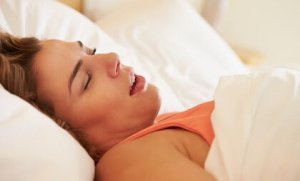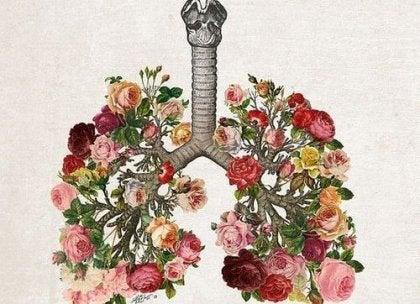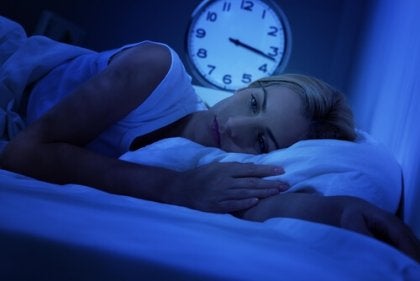Sleep Apnea in Women


Written and verified by the psychologist Valeria Sabater
Sleep apnea in women is underdiagnosed. In fact, when people think of sleep apnea, they usually think of a middle-aged or elderly man snoring. This stereotypical image only tells a small part of the story.
First of all, young people can also suffer from this condition, and it’s common in both men and women. Contrary to popular belief, not everyone with this condition snores, which is why it can be difficult to diagnose.
Studies show that 30% of the population between ages 25-70 suffer from this condition. Experts say that men are diagnosed with sleep apnea eight times more often than women, but that’s not because it’s more common in men.
So what’s happening? Why do women with sleep apnea slip through the cracks? Basically, this condition manifests itself differently in women, which is why doctors often confuse it with other illnesses. Also, not only are women underdiagnosed but some studies show this breathing disorder can have more serious consequences on women than men.

The symptoms of sleep apnea in women
Obstructive sleep apnea is the most common type and it has very concrete symptoms. The main one is that, while you’re sleeping, you actually stop breathing for a few seconds. That happens because the muscles in your throat relax and obstruct your airway. Although most people don’t remember this happening to them, they might snort, choke, or gasp.
This very concrete symptom might make it seem like sleep apnea is easy to diagnose. Unfortunately, that’s not always true, especially for women. Sleep apnea in women is significantly different from sleep apnea in men. Let’s see how this sleep disorder manifests itself in women:
- Women don’t generally snore as loud as men. On average, they don’t make the loud sounds men make while they snore.
- The apnea episodes tend to be shorter. That means that the woman or whoever sleeps with her is less likely to notice.
Ironically, although the symptoms of sleep apnea in women tend to be more subtle, the consequences tend to be more serious.
Effects of sleep apnea in women
- Exhaustion and low energy.
- Memory loss and trouble concentrating.
- Migraines, recurring headaches, and dizziness.
- Heart palpitations, tachycardia, and shortness of breath.
- Restless leg syndrome.
- Mood disorders. Dr. Alison Simms conducted a study at the University of Sydney that showed that sleep apnea often leads to anxiety and depression.
Thus, when a woman with these symptoms goes to the doctor, she usually ends up Beijing treated for the symptoms, not the underlying cause.

Risk factors
- Obesity, metabolic syndrome, being overweight, insulin resistance, leading a sedentary lifestyle, etc.
- Hypertension.
- Pregnancy. This is because the uterus grows in size during pregnancy, meaning it elevates the diaphragm, which slightly changes the way the lungs function.
- Aging. Sleep apnea is common among women between 55-70 years of age. It often coincides with post-menopause.
- Patients with PCOS (polycystic ovary syndrome) are also at a slightly higher risk of developing sleep apnea.
Sleep disorders and stroke
In recent years, scientists hace been studying sleep apnea in women. This is great news because it means that doctors may be more likely to accurately diagnose a female patient who complains of fatigue, mood swings, and headaches. Understanding the underlying cause of these symptoms is crucial to helping women take control of their health.
On the other hand, we’re learning more about the consequences of untreated sleep apnea in women. For example, the Spanish Society of Pulmonology and Thoracic Surgery conducted a study in 2014 that showed the relationship between sleep apnea and strokes in young women.
As a result, it’s vitally important that women experiencing these symptoms see a doctor that specializes in sleep disorders to rule out sleep apnea. Treatment with CPAP (continuous positive airway pressure) machines is quite effective. Not only do CPAP machines improve patients’ quality of life, but they also reduce the risk of suffering from strokes or cardiovascular problems.
In conclusion, it’s important to educate yourself about the risks of sleep apnea. Considering the consequences of letting it go untreated, and the risks associated with not getting enough sleep, talking to your doctor about this important subject could save your life.
All cited sources were thoroughly reviewed by our team to ensure their quality, reliability, currency, and validity. The bibliography of this article was considered reliable and of academic or scientific accuracy.
- Alison Wimms, Holger Woehrle, Sahisha Ketheeswaran , Dinesh Ramanan (2016) Obstructive Sleep Apnea in Women: Specific Issues and Interventions. American Journal of Respiratory and Critical Care Medicine, 123 (2 I), 308–333 doi 10.1155/2016/1764837
- Bixler, EO, Vgontzas, AN, Lin, HM, Ten Have, T., Rein, J., Vela-Bueno, A., y Kales, A. (2001). Prevalencia de la respiración con trastornos del sueño en mujeres: efectos del género. American Journal of Respiratory and Critical Care Medicine, 163 (3 I), 608–613. https://doi.org/10.1164/ajrccm.163.3.9911064
- Krishnan, V., & Collop, N. A. (2006, November). Gender differences in sleep disorders. Current Opinion in Pulmonary Medicine. https://doi.org/10.1097/01.mcp.0000245705.69440.6a
- Vgontzas, A. N., Bixler, E. O., & Chrousos, G. P. (2005, June). Sleep apnea is a manifestation of the metabolic syndrome. Sleep Medicine Reviews. https://doi.org/10.1016/j.smrv.2005.01.006
This text is provided for informational purposes only and does not replace consultation with a professional. If in doubt, consult your specialist.








